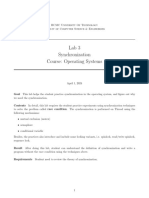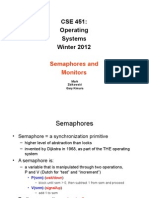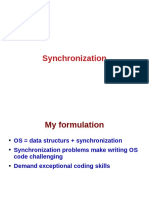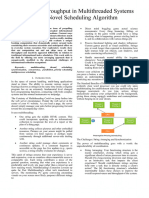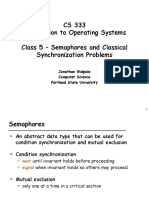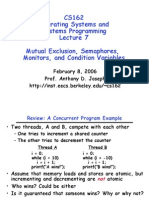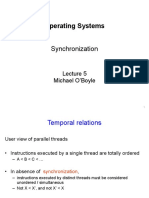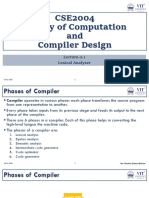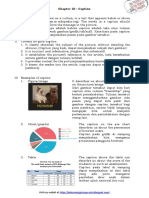0% found this document useful (0 votes)
10 views58 pagesKernelSyncmethods 10
The document discusses various kernel synchronization methods, including critical regions, race conditions, and deadlocks. It explains atomic operations, spin locks, semaphores, and reader-writer locks, detailing their usage, advantages, and disadvantages. Additionally, it covers mutexes and completion variables, providing guidelines for selecting appropriate synchronization mechanisms based on context and requirements.
Uploaded by
agasthyan2002Copyright
© © All Rights Reserved
We take content rights seriously. If you suspect this is your content, claim it here.
Available Formats
Download as PDF, TXT or read online on Scribd
0% found this document useful (0 votes)
10 views58 pagesKernelSyncmethods 10
The document discusses various kernel synchronization methods, including critical regions, race conditions, and deadlocks. It explains atomic operations, spin locks, semaphores, and reader-writer locks, detailing their usage, advantages, and disadvantages. Additionally, it covers mutexes and completion variables, providing guidelines for selecting appropriate synchronization mechanisms based on context and requirements.
Uploaded by
agasthyan2002Copyright
© © All Rights Reserved
We take content rights seriously. If you suspect this is your content, claim it here.
Available Formats
Download as PDF, TXT or read online on Scribd
/ 58













